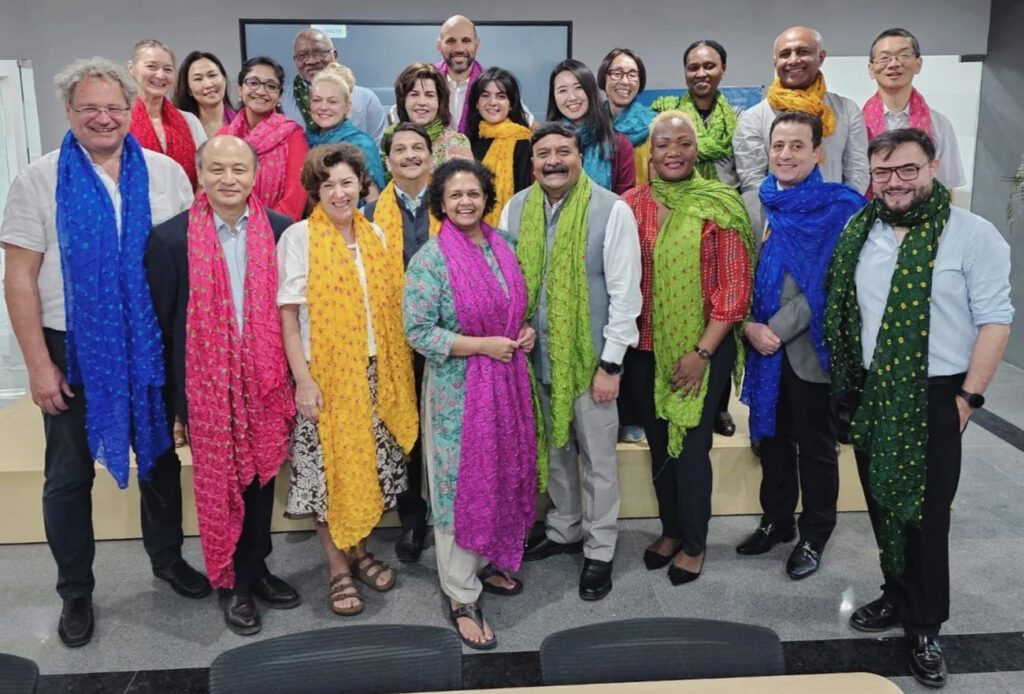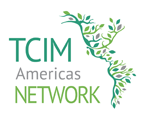Interview with the Director: VHL TCIM Americas is the model for the future WHO Global Library of Traditional Medicine

São Paulo, April 30, 2024 – From March 19 to 22, 2024, the World Health Organization (WHO) brought together experts and technicians in India to plan the activities of its Global Traditional Medicine Centre (GTMC). To be launched in 2025, a new Global Library is being developed by BIREME based on the experience gained with the Virtual Health Library on Traditional, Complementary and Integrative Medicine and the TCIM Americas Network. Read more in the interview with BIREME’s director, Dr. João Paulo Souza.
Learn more in the interview with BIREME’s director, Dr. João Paulo Souza.
The World Health Organization has recently coordinated a couple of meetings to follow up on priority work for the WHO Global Traditional Medicine Centre. Held in March 2024, the mission aimed to “translate the evidence-informed action agenda from the Gujarat Declaration into implementation and impact”. As a participant in these events, can you give us more details about the context of the new Center and its priority projects?
The first part of the mission took place in New Delhi and was a discussion meeting to identify general lines of action, especially those related to the first year of work on the new Center that is being established in Jamnagar. So, in this first stage, we had a large group of experts from the community of traditional medicine and indigenous knowledge, or traditional knowledge of indigenous peoples. We had specific sessions to address major issues, such as biodiversity, sustainability and planetary health, protection of intellectual property rights, coding of information for ICD-11, and others.
At that time, while still working on the structural aspects of the new Center, we also defined and specified the development of what was then being called a “global repository,” or a “knowledge bank” or library. We then discussed content, implementation strategies and challenges. We talked about standards, criteria, and methodologies for inclusion of evidence-based information, and we evaluated the requirements for hosting on digital platforms. Joining me in these discussions were Verônica Abdala, manager of Information Products and Services at BIREME, and Jonas Gonseth-Garcia, advisor on Quality in Health Services and Systems and focal point on Traditional Medicine at PAHO/HSS.
How is WHO working to recognize safe and effective practices developed in a paradigm different from the biomedical model, which is more conventional in public health?
I’m going to talk here about my perception of how this work is being done, rather than speak on behalf of the organization. I see that a lot of the work is related to the epistemic discussions that shape and sustain the different models for producing knowledge about healthcare. So we had a lot of work there related to biodiversity, intellectual property, trying to understand how to ensure that, for example, the traditional knowledge of communities generates benefits for them, and is not just ‘extracted’ from these communities for use by a particular industry. There is a great concern about developing guarantees for the communities that hold traditional knowledge, and that this knowledge can also be a means to economic development for these communities. Another issue widely discussed was the integration, registration, and evaluation of the use of traditional practices into national health systems.
Indeed, one of the ideas driving the establishment of the WHO GTMC is precisely to recognize practices that positively contribute to the process of health production, practices that can be considered in some way effective, safe, and culturally appropriate. Because health systems that operate within a Euro-Western biomedical paradigm, so to speak, have their limits and do not meet all the healing or health needs of our populations. Let’s not forget that about 80% of the people in the world use some form of natural resources to promote their health or alleviate health problems, and that a good portion, if not the majority, of today’s allopathic medicines are derived from natural resources. The idea of this new specialized WHO Center is to help find a way to improve the integration of traditional health practices into health systems, especially those that are safe, effective, culturally relevant and appropriate.

How do different models of knowledge production influence the integration of traditional and indigenous knowledge into scientific evidence?
That was a significant part of the discussion we had there, and it even goes back to epistemological models, because the epistemic approach that we use in so-called “Western” science is very much derived from ideas that developed in the 18th century, especially empiricism, rationalism, and skepticism. The epistemic model that supports evidence-based medicine, for example, is largely derived from these frameworks, especially empiricism. However, this empirical model has some limitations that need to be considered, mainly the difficulty of dealing with the complexity of “real life,” the heterogeneity of people, contexts, interventions, and even evaluations, and the difficulty of eliminating residual confounding effects. These are limitations that often make it difficult to apply scientific-empirical knowledge to complex real-life situations.
Another point to consider is that traditional interventions are often highly individualized or highly contextualized. That is, it is often difficult to conduct large standardized and decontextualized evaluations, contributing to the incompatibility with the conventional empirical model in these situations. So, part of the discussion is how to generate this kind of evidence that is valid, methodologically speaking. Innovations have emerged within the Euro-Western scientific paradigm itself, such as complexity science and the evaluation of complex interventions, and there are emerging epistemic models from the Global South that need to be considered. Furthermore, we have integrative epistemic approaches, such as knowledge encounters developed by Professor José Jorge de Carvalho, for example, which seeks to enable a dialogue between these traditional sciences and what would be Euro-Western sciences.
A further major concern that resonated with the discussions that took place in India had to do with strategies to avoid a neo-colonialism of knowledge. How we can ensure that, even well-intentioned, we do not inadvertently favor an extractivist and colonial approach. To give an example, there was a very interesting discussion that took place about “Open Science.” Here at BIREME, we promote and talk about open science all the time, because in a certain way it’s a model that facilitates transparency in the process of knowledge development and the democratization of access to this knowledge. But from another perspective, an open and transparent approach to traditional knowledge may not always be in the best interest of the communities that hold the traditional knowledge.
Imagine a situation where the publication of a certain “drink” or a certain combination of herbs could allow the identification of a new therapeutic resource that could be industrialized. Without the necessary care, this knowledge can be developed and patented by the industry and duly “packaged” for these same communities. There are many examples of this colonial model of interaction between indigenous communities, traditional knowledge, and the health-industrial complex. How can we ensure that the indigenous communities that have preserved this knowledge and maintained the biodiversity necessary to develop this therapeutic resource can benefit from the use of this knowledge? So it was interesting to see limits even to “open science.” Developing a proposal for open science with safeguards for communities seems to be both a challenge and something very important.

What were the key definitions for this WHO project, which aims to systematize all this knowledge in a Global Library of Traditional Medicines?
In a structuring way for all this discussion is the library. And that was the main reason we went there, to support the development of this platform that will organize all the evidence base that GTMC/WHO will systematize. In the first part of the mission, we coordinated focus groups with experts to discuss the library project, who are the potential users, to define the vision, user needs, and other high-level specifications.
So BIREME has been commissioned to develop a Global Library of Traditional Medicine that will have a global scope and will be composed of six regional portals, one for each WHO region, as well as country profiles and national libraries. We already have a portal for the Americas, the VHL TCIM Americas, which is 95% ready, let’s say, for this model we want to develop globally, so we’re going to do a little bit of tweaking to achieve what we want.
The VHL TCIM Americas will be the model for the regional libraries, so we will have a Global Library of Traditional Medicine and six regional instances: the VHL TCIM Americas, which will maintain its name; and also, the African Library of Traditional Medicines, the European Library of Traditional Medicines, the Middle Eastern Library of Traditional Medicines, the Southeast Asian Library of Traditional Medicines, and the Pacific Library of Traditional Medicines. These are all provisional names. In addition, we will also develop some instances of national libraries to serve as models. We agree to develop models of national libraries for the Ministries of Health of the countries, in collaboration with the local PAHO offices in our case, and with WHO globally.
And our schedule is as follows: from April to October 2024, we will develop and present a minimum viable product of the Global Library; and from October 2024 to March 2025, we should have the beta version ready for use, but still in development. All this in order to have the final delivery already tested, reviewed and ready for use at the next WHO Global Summit, scheduled for the second semester of 2025.

What does it mean for BIREME to have another global project in its portfolio, especially a Global Library that will facilitate access to indigenous and traditional knowledge and medicines for all peoples?
For BIREME, and I think for PAHO as well, it is a distinction to have the mission to develop this Global Library. It is a recognition of decades of expertise in building digital libraries. And particularly in the area of traditional medicines, it is a recognition of the efforts of BIREME and PAHO in structuring a network, a TCIM library that is serves now as a model for the rest of the world. I think this is a source of pride because we will develop both the global and regional libraries based on the experience of the Americas. It has an institutional importance.
It is also a satisfaction to be able to support the creation of another WHO center that will integrate this small family of specialized centers. In addition to the Pan American Centers, which are centers of technical excellence in their fields, we have the WHO Centre for Health Development in Kobe, Japan, this new Centre in India, the International Agency for Research on Cancer (IARC) in France itself, and other initiatives that can reinforce and complement each other in the regional and global structure.
Finally, we must not forget that this is a question of progress towards the collective dream of “Health for All”.
Original WHO article taken from https://www.paho.org/en/news/30-4-2024-interview-director-vhl-tcim-americas-model-future-who-global-library-traditional


